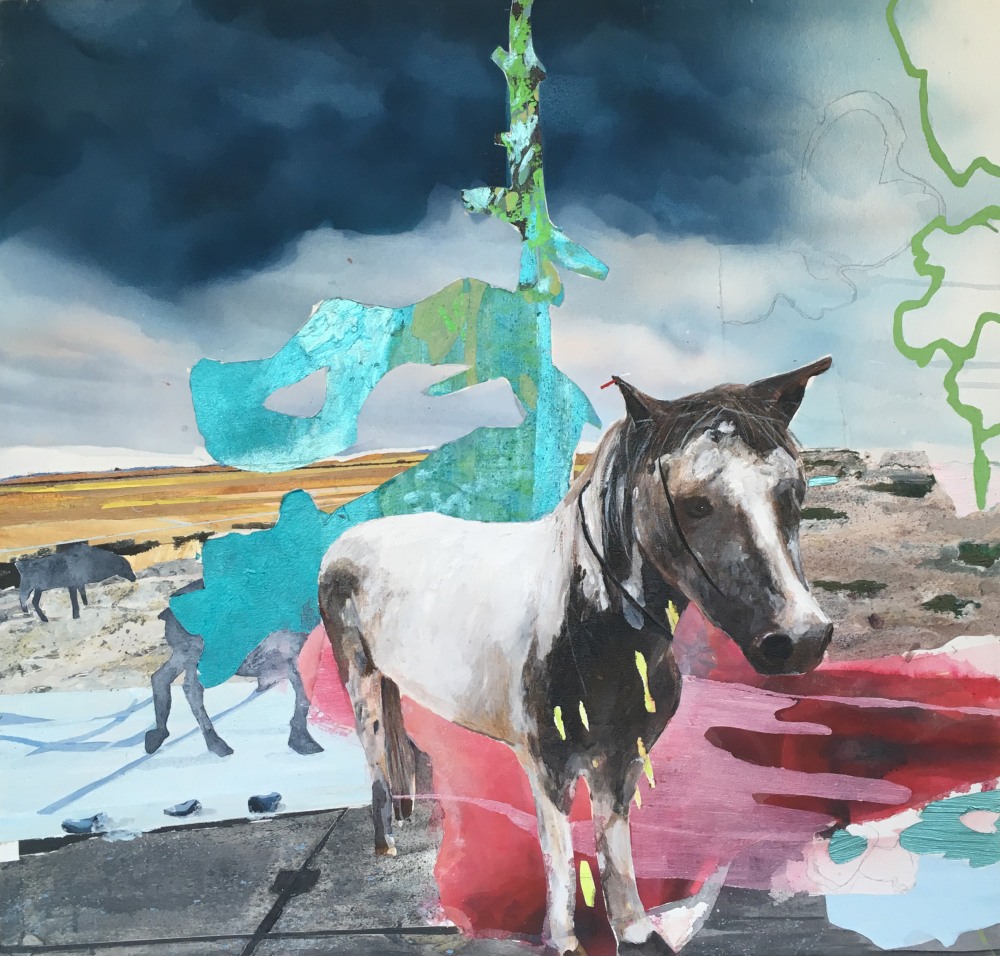
JENNY DAY
A Horse For Greta, 2019
acrylic, colored pencil, flashe, paint pen, enamel, spray paint on canvas
30h x 30w inches
Today we’d like to introduce you to Jenny Day.
Thanks for sharing your story with us Jenny. So, let’s start at the beginning and we can move on from there.
It took me a while to find painting. In 2003, I earned a BA in Environmental Studies from the University of California Santa Cruz. After school, I traveled around the United States and ended up in Maine. I worked in art collectives and had odd jobs, sold Christmas trees, and picked garlic. I moved to Fairbanks, Alaska, and worked as Director of an Environmental Education Camp. I then worked as a Landscape Supervisor at the University of Alaska Fairbanks. I went back to school at night. I am always eager to learn new skills and found myself pulled in many directions. Making knives and prints and having a large garden. In 2010, I earned a BFA in Painting from the University of Alaska Fairbanks. At this point, I really began to take painting seriously, quit my job, and moved to Tucson, Arizona for graduate school. In 2014, I earned an MFA in Painting from the University of Arizona.
I make acrylic and mixed media paintings on canvas. I live in Santa Fe, New Mexico. I recently had an exhibition of my paintings at William Havu Gallery in Denver. My work is also represented by Jonathan Ferrara Gallery in New Orleans, LA, and Davis Dominguez Gallery in Tucson, AZ.
Overall, has it been relatively smooth? If not, what were some of the struggles along the way?
No. But I have always felt a drive to keep making, creating, and searching for the next good idea or painting. The biggest struggle is probably the ups and downs of finances as an artist. The best advice I can give is to build a good support network of family, friends, and advocates in your field.
As an artist, I put my work out into the world and apply for grants, residencies, and galleries. I withstand a lot of rejection but try not to take it personally. I see the rejection as a challenge to keep putting myself out there until I find the right opportunity. I think it is important to see value in your own opinion and life experiences. Building from this mindset gives me strength and courage to keep going and to be thankful for the support I already have.
Please tell us more about your art.
I make large acrylic and mixed paintings on canvas. I start by making collages to use as a reference. I incorporate various materials besides paint in my work, like highlighters, pens, and glitter, to name a few.
I see my paintings as small, jesting complaints, that begin in unease, in the miscalibration between the fires, literal and figural, that we’ve unleashed, and the meagerness of our response to them. The absurdity of the modern world, and an absurdist humor, leavens an underlying despair. The work references a multiplicity of signals, amplified, demanding, overwhelming. So many signs that the signifiers pass by mis-read, unread, unreadable. Patterns double, replicate, obscure. Ocelli mimic eyes, misdirect attention. The copy mocks the original. The real is eclipsed by the imaginary, as horse to unicorn. Animals, alienated and misplaced, stand in as witnesses, another feint.
Finding a mentor and building a network are often cited in studies as a major factor impacting one’s success. Do you have any advice or lessons to share regarding finding a mentor or networking in general?
I have found mentors by taking classes, workshops, and attending artist residencies. Connecting with people on social media that are doing things I admire and am intrigued by has been a way to stay current. In general, I don’t think about networking, instead when interacting with people, I try to be myself, be kind, honest, listen, and help to create a supportive community.